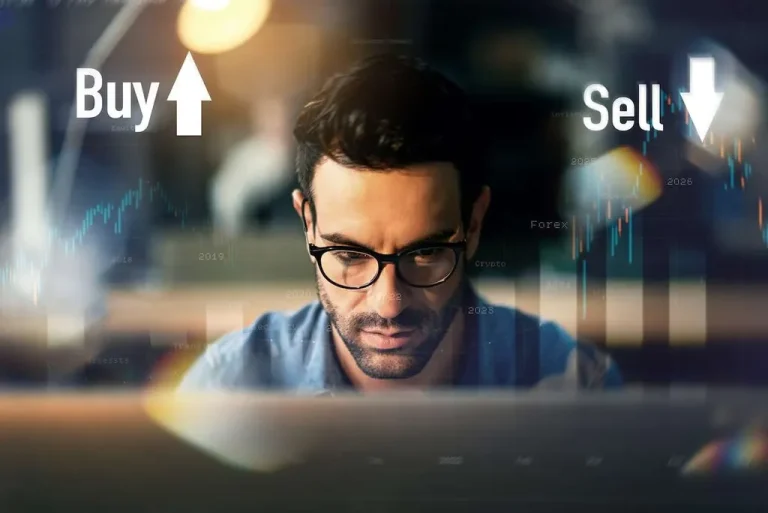Content
OTC derivatives provide increased flexibility on terms and allow users to customize components of their trade like the notional size, tenor, strike, and settlement. OTC markets also offer a wider suite of derivative instruments like variance swaps, average price options, and other exotic derivatives that can be advantageous for hedging specific exposures. Exchange (organized market) For example, a producer of a commodity, like an oil rig operator or a bitcoin miner, may be interested in hedging with average price options to align the pricing of the hedge with daily production. Hedging, a crucial risk management strategy in crypto derivatives trading, involves using instruments like futures and options to offset potential losses in an existing position.
How do Crypto Derivatives Work?
Some exchanges offer features such as analysis and charting tools, which may https://www.xcritical.com/ appeal to traders who rely heavily on technical indicators. However changes in regulations could provide clearer rules and better protection for investors. Given the vast number of exchanges in crypto, the term spot price in crypto isn’t as clear as in traditional markets.
How do crypto derivatives work?
Price manipulation – The cryptocurrency market is vulnerable to price manipulation, which can lead to what is crypto derivatives exchange losses for investors who are trading crypto derivatives. Liquidity – When choosing crypto derivatives, it is crucial to consider liquidity as it affects your ability to execute trades at a desirable price. Highly liquid crypto derivatives have a higher volume of trades, which translates to tighter bid-ask spreads and more stable prices. Crypto derivatives work by allowing investors to speculate on the price movements of cryptocurrencies without actually owning the underlying asset. In this article, we will explore everything about crypto derivatives, the different types of derivatives, advantages and disadvantages of trading in derivatives, and the top exchanges where you can trade them.
Influencing prices in the spot market
They allow traders to use advanced strategies and could help them earn more money through leverage trading. Crypto derivatives give skilled traders strong tools to take advantage of price changes. The structure keeps the demand for long and short positions balanced by offering incentives for the less popular market side. For example, if a perpetual swap’s price is higher than its underlying asset’s spot price, long position holders are charged the funding rate, which they pay to traders in the short position. Understanding crypto derivatives is essential for navigating the dynamic cryptocurrency market. These instruments provide opportunities for speculation and risk management, but they also come with inherent risks.
- ByBit, a prominent player in the crypto derivatives market, offers a specialized trading platform focusing on futures and perpetual contracts.
- The platform’s interface and ease of usability play a significant role in trading success.
- A decentralized crypto derivatives exchange handles trading transactions on-chain using smart contracts that execute automatically without taking custody of customer funds.
- There was a need for a system to account for the varying values of national currencies among international traders.
- Its strong focus on security and compliance further cements its status as one of the top choices for crypto traders globally.
Like any exchange, traders should assess how OKX aligns with their trading needs and strategies, especially considering the dynamic nature of crypto regulations and market conditions. OKX’s position in the market and its service offerings make it a strong contender for traders looking for a reliable and efficient derivative trading platform—the OKX review on Coin Bureau dives deeper into the exchange nuances. In the dynamic world of cryptocurrency, derivatives have emerged as pivotal instruments for traders seeking to hedge risk, speculate on price movements, or gain exposure to the crypto market without holding the underlying assets.

Crypto derivatives are one of the most complex and fast-growing use cases in crypto — and one of the most interesting too. For traders, offering such products makes it possible to take positive or negative positions on cryptocurrencies without having to directly own the asset. Derivatives exchanges are legal and regulated marketplaces for trading derivatives such as options, futures, and swaps. They are platforms where buyers and sellers can trade using standardized instruments in accordance with defined rules and regulations.
Open interest, indicating the total number of outstanding derivative contracts, is a primary measure of an exchange’s liquidity. High open interest suggests a vibrant market with ample traders, facilitating easier entry and exit at competitive prices. Liquidity is crucial for minimizing slippage, especially for large orders, and ensures that the market can absorb trades without significant price impacts. Liquidation occurs when a trader’s position is automatically closed by the exchange due to insufficient margin to cover potential losses. This happens when the market moves against the trader’s position beyond the margin level.
In general, OTC-traded derivatives are more susceptible to counterparty risk, which is the possibility that one of the parties involved in the transaction will default. To lessen the impact of currency fluctuations, the investor may wish to buy a currency derivative to guarantee a certain exchange rate. Currency futures and currency swaps are two derivatives that could be used to hedge this type of risk. Forwards are another type of crypto derivative which is quite similar to futures contracts but the main difference is that forward contract deals with over-the-counter trade exchanges instead of centralized exchanges. Crypto derivatives contribute to market liquidity and influence the ease of trading crypto.

Crypto derivatives contracts allow traders to gain exposure to the price movement of a digital asset without actually owning the asset. Two common types of crypto derivatives are futures and options, and they are used mainly for hedging and speculation. In the dynamic world of crypto derivatives, we are witnessing evolution despite market downturns, with bitcoin and Ethereum at the forefront. These derivatives, spanning traditional finance – like options and futures to novel products such as perpetual swaps, UpDown Options, Bitcoin Hashprice NDFs and staking yield swaps, are reshaping investment and hedging strategies. Traditional valuation methods are adapted to the crypto market’s unique volatility and continuous trading.
Learn about the main types, including options andfutures, and whether to trade them. Given that the use of derivative contracts is linked to their fundamental assets, traders use derivatives to manage the risks that may be incurred from the price fluctuation of those assets. The importance of crypto derivatives in the modern financial landscape extends beyond mere trading instruments. These derivatives serve as vital tools for market stabilization, risk management, and enhancing overall market efficiency.
We will “cut the fat” and design a lean product that has only the critical features. In terms DeFi Ethereum and Solana both are trying their level best to capture the potential market. In this article, we will walk you through creating your own cryptocurrency token or coin.

Perpetual swaps use a funding rate mechanism to guarantee that the contract’s price remains equal (or very close) to that of the underlying asset. This guide explains what crypto derivatives are, their different types and uses, and their role in the crypto market. Following the comparative analysis, we also explored the risks of crypto derivatives and some techniques to mitigate them. I will close this piece by iterating that more than competing in a volatile market, trading derivatives is a bet against one’s trading prowess. Thankfully, trading is a skill that one can hone with experience, learning, and practicing. By understanding the key factors and risks we have outlined, you can make informed decisions that align with your trading goals.
This strategy is a protective put because it mitigates the stock’s downside risk. Potentially profit whichever way the market goes,by trading US CFTC-regulated derivatives productsvia the Crypto.com App. In 2020, the UK placed a ban on the sale of crypto derivatives to retail investors. A major issue of derivatives contracts is legal sanctions on the activities of derivative traders.



